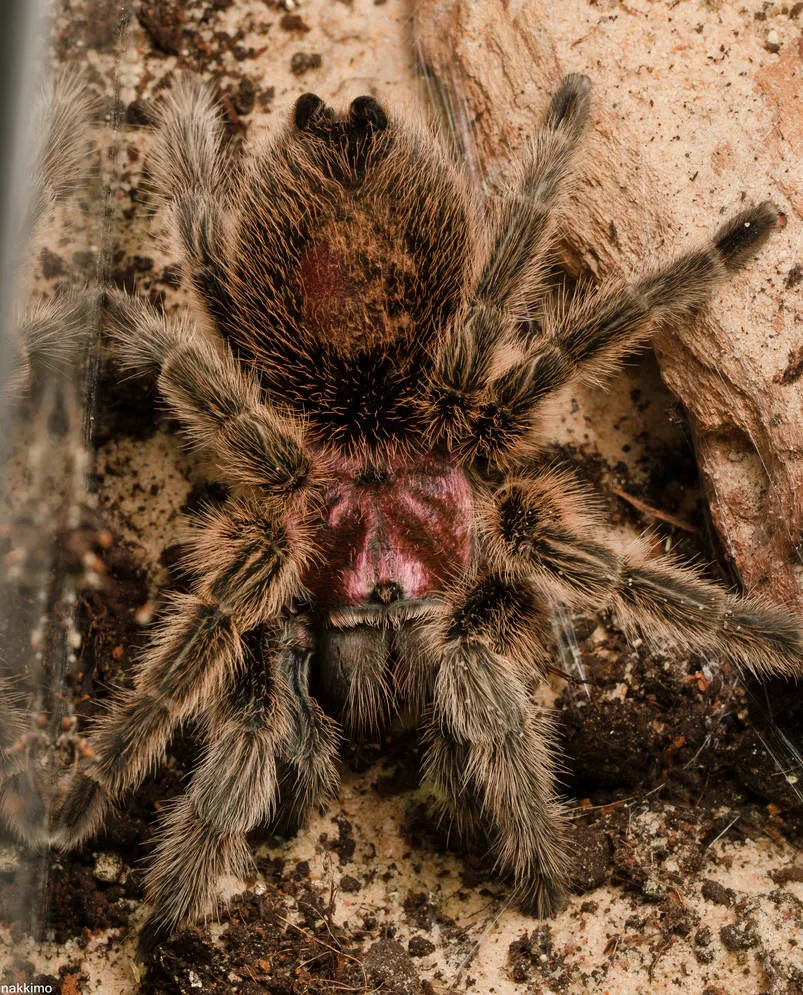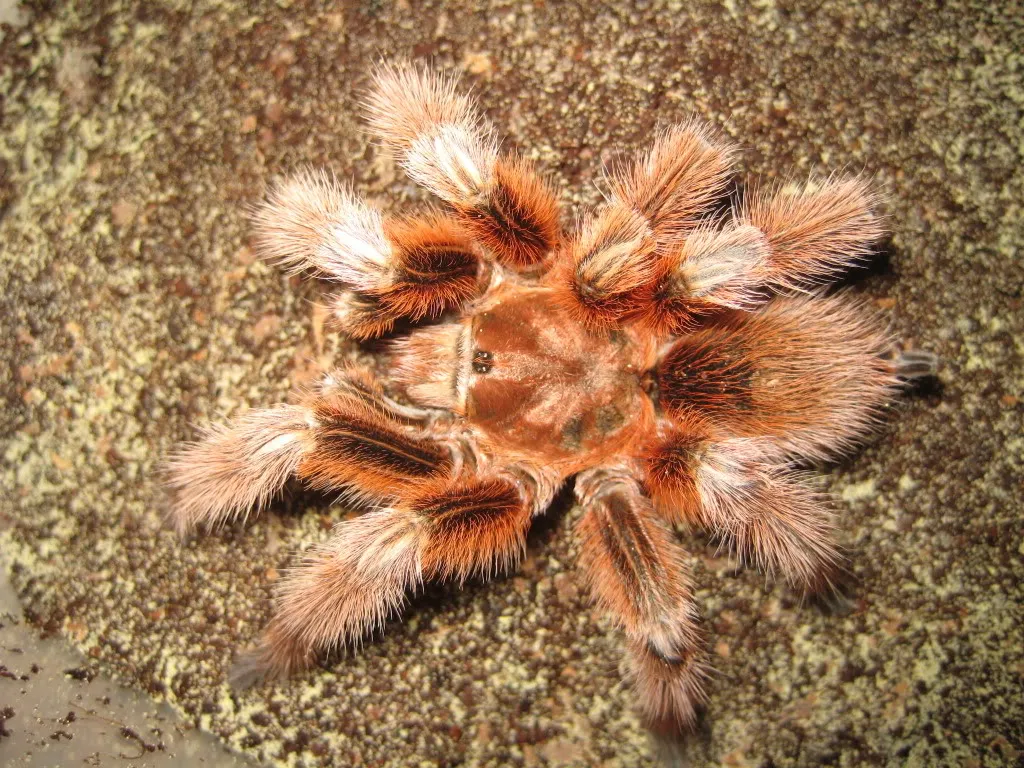The Chilean Rose Tarantula, with its gentle demeanor and beautiful rose-colored hairs, is a popular pet choice. However, like any creature, these arachnids pose certain risks. Understanding these dangers is crucial for responsible pet ownership and ensuring both your safety and the tarantula’s well-being. This article explores the top 5 dangers associated with Chilean Rose Tarantulas, providing you with the knowledge to handle and care for them safely.
The Chilean Rose Tarantula’s Mild Venom
One of the most frequently asked questions about Chilean Rose Tarantulas is whether they are venomous. The answer is yes, they are. However, their venom is considered relatively mild compared to many other tarantula species. While a bite from a Chilean Rose Tarantula is unlikely to be life-threatening to a healthy adult, it can still cause discomfort and other issues. It’s essential to recognize that the severity of a bite can vary depending on several factors.
Understanding Tarantula Venom Effects
The effects of a Chilean Rose Tarantula bite often resemble a bee sting. Symptoms can include localized pain, redness, swelling, and itching at the bite site. Some individuals may experience muscle cramps or stiffness. The duration of these symptoms is usually short-lived, lasting from a few hours to a couple of days. However, it’s essential to monitor the bite area for any signs of infection or unusual reactions.
Allergic Reactions and Sensitivities

While rare, some individuals may be allergic to tarantula venom. Allergic reactions can range from mild symptoms like hives and itching to more severe reactions like difficulty breathing, swelling of the face or throat, and anaphylaxis. If you suspect you are experiencing an allergic reaction after a bite, seek immediate medical attention. It’s always wise to consult with a medical professional or allergist if you have concerns about potential allergic reactions, especially if you have a history of allergies.
The Potential for Secondary Infections
Although not directly caused by the venom, secondary infections can sometimes occur at the bite site. This is because the tarantula’s fangs, though small, can introduce bacteria into the wound. Symptoms of an infection include increased pain, swelling, redness, pus, and fever. Keeping the bite area clean and dry can minimize the risk of infection. Consult a healthcare provider if you notice signs of infection, as antibiotic treatment may be necessary.
Defensive Behavior & Irritating Hairs
Chilean Rose Tarantulas are generally docile but can exhibit defensive behaviors when threatened. These behaviors, alongside their urticating hairs, are significant dangers. Understanding these defenses helps prevent unnecessary stress for the tarantula and reduces the risk of adverse reactions for the handler. Both the tarantula’s posture and its hairs are designed to deter predators and protect the spider.
The Tarantula’s Defensive Posture

When feeling threatened, a Chilean Rose Tarantula may display a defensive posture. This involves raising its front legs, exposing its fangs, and sometimes, rearing up its abdomen. This posture serves as a warning signal, indicating that the tarantula is prepared to defend itself if necessary. Avoiding sudden movements, loud noises, and direct handling when the tarantula is in this posture can reduce the chances of being bitten.
Urticating Hairs and Skin Irritation
Chilean Rose Tarantulas, like many New World tarantulas, possess urticating hairs on their abdomen. These tiny hairs are barbed and can be flicked off by the tarantula as a defense mechanism. When these hairs come into contact with skin, they cause intense itching, irritation, and sometimes even small, raised bumps similar to hives. This reaction is not an allergic one but a physical response to the hairs themselves.
Allergic Reactions from Urticating Hairs
While the primary reaction to urticating hairs is physical irritation, some individuals with sensitive skin might experience allergic reactions. Symptoms of such reactions can include more severe skin inflammation, redness, swelling, and persistent itching. If you experience unusual or severe symptoms after exposure to urticating hairs, you should seek medical advice. Washing the affected area thoroughly with soap and water can help remove the hairs and alleviate symptoms.
Physical Trauma & Handling Risks

Improper handling can lead to various physical dangers for both the tarantula and the handler. These risks include falls, injuries from handling, and the potential for bites. Always handle a Chilean Rose Tarantula with caution and respect for its needs. Minimizing handling and creating a safe environment can significantly reduce these hazards.
Falls and Escape Hazards
Chilean Rose Tarantulas, despite being relatively slow-moving, can still fall and sustain injuries. Falls from a height, even a small one, can lead to the rupture of their abdomen or damage to their exoskeleton. Furthermore, if a tarantula escapes its enclosure, it can be difficult to find and might be exposed to environmental hazards. Always secure the enclosure properly and supervise handling sessions to prevent escapes and falls.
Handling-Related Injuries
Direct handling should be kept to a minimum. When handling is necessary, use gentle, slow movements. Avoid squeezing or dropping the tarantula. Be aware that the tarantula may move quickly, and if startled, it could bite or attempt to escape. Always wash your hands before and after handling to maintain cleanliness and to avoid transferring any harmful substances.
The Risk of Bites

Though their venom is mild, bites can still occur if the tarantula feels threatened. Avoid putting your fingers in the tarantula’s path, and be especially cautious when the tarantula is displaying defensive behaviors. If a bite occurs, stay calm and clean the area with soap and water. Observe for any signs of allergic reaction or infection and seek medical attention if necessary. Try to identify the exact circumstances of the bite to avoid future occurrences.
Environmental Hazards and Unsafe Conditions
The environment in which a Chilean Rose Tarantula lives can pose several risks. These risks encompass everything from the design of the enclosure to temperature and humidity. Ensuring a safe and stable environment is vital for the tarantula’s well-being and to prevent potential dangers.
Improper Enclosure and Environmental Concerns
The enclosure should be appropriately sized, escape-proof, and provide suitable substrate for burrowing. Sharp objects within the enclosure should be avoided to prevent injury. The enclosure should also be cleaned regularly to maintain hygiene and prevent the buildup of harmful bacteria or fungi. Ensure adequate ventilation to prevent moisture buildup, which can lead to mold growth, which may negatively affect the tarantula’s health.
Impact of Temperature and Humidity

Chilean Rose Tarantulas thrive in specific temperature and humidity ranges. Extreme temperatures and humidity levels can stress the tarantula and make it more susceptible to illness. Use a thermometer and hygrometer to monitor the environmental conditions inside the enclosure. Maintain a stable environment with the correct temperature and humidity levels to ensure the tarantula’s health. Avoid placing the enclosure in direct sunlight or near heat sources.
Conclusion
Owning a Chilean Rose Tarantula can be a rewarding experience. However, understanding the potential dangers is crucial for responsible pet ownership. By recognizing the risks associated with their mild venom, defensive behaviors, handling, and environment, you can significantly enhance the safety of both yourself and your pet. Always prioritize safety, research thoroughly, and provide a suitable environment to ensure a healthy and fulfilling life for your Chilean Rose Tarantula.
